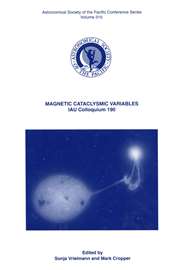No CrossRef data available.
Article contents
Combining High Angular Resolution Interferometry and Spectroscopy in Studies of Stars and Stellar Systems
Published online by Cambridge University Press: 12 April 2016
Abstract
A number of long baseline optical/infrared interferometers have commenced their scientific programs or are under development. These instruments will provide accurate measurements of the angular sizes of single stars and the angular separations of binary systems at resolutions impossible with conventional telescopes. The combination of interferometric data with the results of high-resolution spectroscopy will, for many classes of objects, provide a powerful method for studying them that neither technique can do alone. Examples include the combination of interferometric and spectroscopic data for spectroscopic binaries and, in particular, for double-lined binaries, and single-lined binaries of known parallax, to determine fundamental stellar quantities. Another example concerns the study of Cepheid variables, where the combination of the data can provide an independent calibration of the zero point of the luminosity scale. The requirements and potential of these combined interferometric-spectroscopic studies are discussed.
- Type
- Part 10. Radial Velocities, Interferometry and Space Missions
- Information
- International Astronomical Union Colloquium , Volume 170: Precise Stellar Radial Velocities , 1999 , pp. 390 - 400
- Copyright
- Copyright © Astronomical Society of the Pacific 1999


